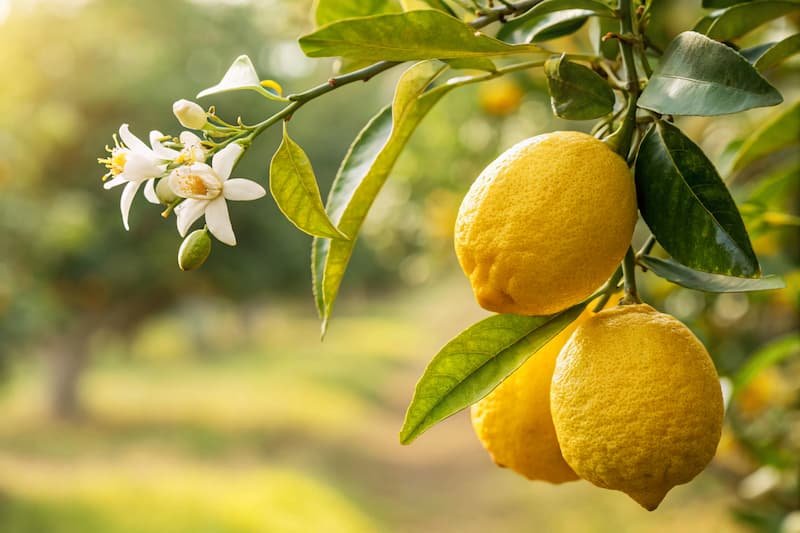Here’s a complete guide for orange tree care, covering planting, watering, fertilizing, pruning, pest/disease control, and general maintenance:

🍊 Orange Tree Care Guide
1. Planting
- Location: Full sun (at least 6–8 hours/day), well-drained soil. Avoid low spots where water pools.
- Spacing: Standard trees ~15–25 ft apart, dwarf varieties ~8–12 ft.
- Soil: Slightly acidic to neutral (pH 6.0–7.0). Amend sandy soils with organic matter.
- Planting tip: Dig a hole slightly wider than the root ball, keep the tree at the same depth as in the nursery container, and water thoroughly after planting.
2. Watering
- Frequency: Young trees need water 2–3 times/week; mature trees once/week deeply.
- Method: Drip irrigation or slow soak around the root zone is ideal.
- Signs of overwatering: Yellowing leaves, root rot.
- Signs of underwatering: Wilting, leaf drop, poor fruiting.
3. Fertilizing
- Type: Citrus-specific fertilizer with nitrogen (N), phosphorus (P), potassium (K), plus micronutrients (Mg, Fe, Zn).
- Schedule:
- Young trees: Every 6–8 weeks during the growing season.
- Mature trees: 3–4 times/year (early spring, late spring, summer, early fall).
- Application: Spread evenly under the canopy, keep 6–12 inches from the trunk.
4. Pruning
- Remove dead, diseased, or crossing branches.
- Maintain an open canopy for sunlight and air circulation.
- Avoid heavy pruning during fruiting; late winter or early spring is ideal.
5. Mulching
- Apply 2–4 inches of organic mulch (wood chips, bark, or compost) around the base, keeping a few inches away from the trunk.
- Benefits: Retains moisture, suppresses weeds, regulates soil temperature.
6. Pest Management
Common pests:
- Aphids, scale insects, citrus leafminer, spider mites
- Monitor regularly and use:
- Insecticidal soap or horticultural oil for soft-bodied insects.
- Beneficial insects (ladybugs, lacewings) as natural predators.
7. Disease Management
Common diseases:
- Citrus canker: Bacterial, causes lesions on leaves/fruits.
- Greasy spot: Fungal, causes dark spots on leaves.
- Root rot (Phytophthora): Waterlogged soils worsen this.
- Management tips:
- Use copper fungicides or systemic fungicides as preventive sprays.
- Keep canopy dry, prune properly, remove infected leaves, avoid overwatering.
8. Harvesting
- Oranges are usually ready 6–12 months after flowering.
- Fruit should be firm, fully colored, and sweet.
- Pick carefully to avoid bruising.
9. Winter Care
- Orange trees are frost-sensitive.
- Cover young trees with frost cloth if temperatures drop below 28°F (−2°C).
- Container-grown trees can be moved indoors during winter.
✅ Quick Tips for Healthy Orange Trees
- Plant in sunny, well-drained soil.
- Water deeply but avoid waterlogging.
- Fertilize regularly with citrus-specific fertilizer.
- Prune lightly to maintain air circulation.
- Monitor for pests and diseases, use preventive treatments.
- Mulch to conserve moisture and suppress weeds.
- Harvest when fruit is fully ripe.

Here’s a comprehensive guide to lemon tree care, covering indoor and outdoor trees, so you can keep yours healthy and productive:
1. Sunlight
- Lemon trees need full sun: 8–12 hours per day.
- If indoors, place near a south-facing window or supplement with grow lights.
- Rotate potted trees periodically for even light exposure.
2. Soil
- Use well-draining soil.
- Ideal pH: 5.5–6.5 (slightly acidic).
- For pots: mix potting soil + sand/perlite for drainage.
3. Watering
- Keep soil evenly moist, not waterlogged.
- Watering schedule:
- Young trees: 2–3 times/week.
- Mature trees: ~once/week, more often in hot or dry weather.
- Allow the top 1–2 inches of soil to dry before watering again.
4. Fertilizing
- Use citrus-specific fertilizer with nitrogen, potassium, and magnesium.
- Fertilization schedule:
- Spring & summer: every 6–8 weeks.
- Fall & winter: reduce or stop.
- Look for leaf yellowing or poor growth as a sign of nutrient deficiency.
5. Pruning
- Remove dead or crossing branches and suckers at the base.
- Improve air circulation and sunlight penetration.
- Best time: late winter or early spring before new growth.
6. Temperature & Humidity
- Ideal temperature: 70–85°F (21–29°C) day, 55–65°F (13–18°C) night.
- Lemon trees are frost-sensitive. Bring indoor or cover outdoor trees in frost.
- If indoor air is dry, mist leaves or use a humidity tray.
7. Pests & Disease Prevention
- Common pests: aphids, scale, spider mites, citrus leaf miner.
- Common diseases: greasy spot, black spot, root rot, canker.
- Management:
- Inspect leaves/fruit weekly.
- Use insecticidal soap or neem oil for pests.
- Ensure good drainage and avoid overwatering.
- Remove fallen leaves and diseased fruit.
8. Repotting / Planting
- Repot every 2–3 years into a slightly larger pot.
- Ensure roots aren’t sitting in water.
- Outdoor trees: plant in well-draining soil with full sun and space for air circulation.
9. Fruit Care
- Lemon trees may take 1–3 years to bear fruit indoors, slightly faster outdoors.
- Thin fruit if there’s overproduction to prevent branch breakage.
- Harvest when lemons are fully yellow or slightly green, depending on variety.
10. Seasonal Care Summary
| Season | Key Tasks |
|---|---|
| Spring | Fertilize, prune, inspect for pests, increase watering |
| Summer | Water more frequently, monitor for pests, support branches with heavy fruit |
| Fall | Reduce fertilization, prepare for cooler temps, check drainage |
| Winter | Protect from frost, reduce watering, indoor trees may need supplemental light |
💡 Extra Tip: Regularly check undersides of leaves for early signs of pests or disease. Lemon trees are resilient, but proactive care keeps them thriving and fruiting.
